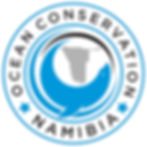
Key Issues
Major Threats to Our Oceans and Marine Life
The world’s oceans face a wide range of urgent threats, from overfishing to pollution and habitat destruction. Here, we’ve compiled a list of some of the most pressing challenges affecting Namibia’s marine environment today. We recognise that many other serious threats exist, and we will expand this list as our resources allow.
Subscribe to Ocean Conservation's
Monthly Newsletter!
Want to see past editions? Visit our Newsletter Archive
Questions? Visit our Frequently Asked Questions
The Ocean Conservation Namibia Trust is a registered charitable trust with the Namibian High Court.
Ocean Conservation Namibia, PO Box 5304, Walvis Bay Namibia
Ocean Conservation International is registered as a non-profit entity under chapter 501(c)(3) in the U.S.
Ocean Conservation International, 8 The Green, STE A, Dover , DE 19901
Contact us: info@ocnamibia.org
Please visit our Frequently Asked Questions for more information on our rescues.









